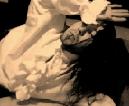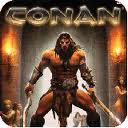 |
|
|
|
| Author |
Message |
conal
Site Admin
|
 Posted: Fri Nov 16, 2007 8:29 am Posted: Fri Nov 16, 2007 8:29 am |
 |
|
At least you knew who they were.
Formulae are fine and trainable but the second any system hits the individual it changes.
I guess this was the point I was trying to make. |
|
|
 |
Adam
Location: Auckland
|
 Posted: Fri Nov 16, 2007 10:24 am Posted: Fri Nov 16, 2007 10:24 am |
 |
|
| White Knight wrote: | I have found this particular topic of conversation to be very intereseting and have learnt more about Japanese martial arts from it.
Its good to be able to have a decent discussion with other people without any political or emotional rubbish being brought in. |
Thats because this is an Adam thread of course.  |
|
|
 |
stephan
|
 Posted: Fri Nov 16, 2007 10:29 am Posted: Fri Nov 16, 2007 10:29 am |
 |
|
go knights!
japan is awesome and is the only noneuropean country that evolved a similar culture to medieval europe but with some massive differnces but still go knights
swords and sheild vs katana/twohanded sword sheilds men wins every time
stephan |
|
|
 |
Vorschlag

Location: Auckland
|
 Posted: Fri Nov 16, 2007 5:38 pm Posted: Fri Nov 16, 2007 5:38 pm |
 |
|
Also debatable, once Knights had the armour to not need shields they discarded them to use a two handed sword, which shows the value of shield fell away as armour got better.
Further to this, a shield limits your attack range more so than a two handed sword and needs to be used in conjunction with the sword to protect real blows.
Where the two handed sword is far more capable of changing direction than a sword and shield.
If you ignore period armour then it becomes a contest of who can use their weapon choice more effectively and understands the mechanics of time, distance, range, power generation etc.
You also have to take into account the two handed swordsman can easily go one handed to grapple and the shield creates a manipulation point for the enemies body.
This is excluding the fact that later period two handers of the european tradition are used more like a pollweapon and would destroy someone using a sword and shield, infact I almost feel sword and buckler beats sword and shield.
_________________
On five words hinge the entire art of the sword, in and out of armour, on horse and on foot. |
|
|
 |
Colin

Location: Wellington
|
 Posted: Fri Nov 16, 2007 6:17 pm Posted: Fri Nov 16, 2007 6:17 pm |
 |
|
| T.M.M wrote: | | ...infact I almost feel sword and buckler beats sword and shield. |
George Silver agrees with you:
Paradox 21
"The sword and buckler has advantage against the sword and target, the sword and dagger, or rapier and poniard.
The two handed sword has the vantage against the sword and target, the sword and buckler, the sword and dagger, or rapier and poniard."
_________________
The person who writes for fools is always sure of a large audience.
- Arthur Schopenhauer
See http://www.swordsmanship.co.nz/ |
|
|
 |
Vorschlag

Location: Auckland
|
 Posted: Fri Nov 16, 2007 6:24 pm Posted: Fri Nov 16, 2007 6:24 pm |
 |
|
True but Silver is renaissance swordsmanship rather than medieval, so his footwork and technique have changed somewhat (not to the degree of rapier texts but still) do you think the same still applies to the medieval systems ?
_________________
On five words hinge the entire art of the sword, in and out of armour, on horse and on foot. |
|
|
 |
Colin

Location: Wellington
|
 Posted: Fri Nov 16, 2007 6:38 pm Posted: Fri Nov 16, 2007 6:38 pm |
 |
|
| T.M.M wrote: | | True but Silver is renaissance swordsmanship rather than medieval, so his footwork and technique have changed somewhat (not to the degree of rapier texts but still) do you think the same still applies to the medieval systems ? |
It is true that Silver is taking advantage of the basket hilt, which is something not available to the medieval swordsman. How the underlying mechanics are pretty much the same. I presented a paper to the University of Auckland MEDEMS department covering two important aspects that are fully utilised in the texts of Fiore dei Liberi, Filippo Vadi, the three pre-Silver English treatises, I.33 and the Liechtenaur corpus of material. I even explained how the Spanish system was 'perfect' by Silver's reckoning due to these principles.
Essentially in regards to the shield versus buckler Silver explains in Paradox 25 that the target inhibits the ability of the sword.
Silver does not directly explain why the two handed sword is superior to the sword and buckler or sword and target.
_________________
The person who writes for fools is always sure of a large audience.
- Arthur Schopenhauer
See http://www.swordsmanship.co.nz/ |
|
|
 |
Vorschlag

Location: Auckland
|
 Posted: Fri Nov 16, 2007 6:54 pm Posted: Fri Nov 16, 2007 6:54 pm |
 |
|
That’s simple though, that’s just control, range and manoeuvrability.
_________________
On five words hinge the entire art of the sword, in and out of armour, on horse and on foot. |
|
|
 |
Colin

Location: Wellington
|
 Posted: Fri Nov 16, 2007 7:13 pm Posted: Fri Nov 16, 2007 7:13 pm |
 |
|
Silver's footwork appears to be pretty much in line with earlier fencing treatises, including earlier English ones. The two aspects that I covered were the true place and true place. Without understanding these two things you don't understand medieval fencing in the slightest. They are intrinsically entwined with understanding time and distance from the medieval POV.
While it is true that contemporary Italian fencing had the equivalence of Silver's true space and place, the mechanics of achieving these are very different.
Anyway this conversation is derailing.
_________________
The person who writes for fools is always sure of a large audience.
- Arthur Schopenhauer
See http://www.swordsmanship.co.nz/ |
|
|
 |
Vorschlag

Location: Auckland
|
 Posted: Fri Nov 16, 2007 7:35 pm Posted: Fri Nov 16, 2007 7:35 pm |
 |
|
He does however also make use of the half pass and elonge (used this termanology as I can't see him suggesting the earlier version) does'nt he?
_________________
On five words hinge the entire art of the sword, in and out of armour, on horse and on foot. |
|
|
 |
Colin

Location: Wellington
|
 Posted: Fri Nov 16, 2007 8:43 pm Posted: Fri Nov 16, 2007 8:43 pm |
 |
|
| T.M.M wrote: | | He does however also make use of the half pass and elonge (used this termanology as I can't see him suggesting the earlier version) does'nt he? |
To use the same lingua franca that you are using Silver would use a demi-allonge, and no to the half pass. One researcher has, however used this style of footwork for his interpretation of Silver, and was a student of Maitre d' Armes Rohdes (name escapes me right now). I don't concur with his findings, however, since Silver explicitly mentions footwork that cannot be performed easily with this style of movement.
_________________
The person who writes for fools is always sure of a large audience.
- Arthur Schopenhauer
See http://www.swordsmanship.co.nz/ |
|
|
 |
stephan
|
 Posted: Sun Nov 25, 2007 9:40 am Posted: Sun Nov 25, 2007 9:40 am |
 |
|
| T.M.M wrote: | Also debatable, once Knights had the armour to not need shields they discarded them to use a two handed sword, which shows the value of shield fell away as armour got better.
Further to this, a shield limits your attack range more so than a two handed sword and needs to be used in conjunction with the sword to protect real blows.
Where the two handed sword is far more capable of changing direction than a sword and shield.
If you ignore period armour then it becomes a contest of who can use their weapon choice more effectively and understands the mechanics of time, distance, range, power generation etc.
You also have to take into account the two handed swordsman can easily go one handed to grapple and the shield creates a manipulation point for the enemies body.
This is excluding the fact that later period two handers of the european tradition are used more like a pollweapon and would destroy someone using a sword and shield, infact I almost feel sword and buckler beats sword and shield. |
duh |
|
|
 |
Vorschlag

Location: Auckland
|
 Posted: Sun Nov 25, 2007 7:01 pm Posted: Sun Nov 25, 2007 7:01 pm |
 |
|
Wow, a whole post with no spelling mistakes and bordering on English, congratulations, someone buy the man a drink.
But just for your benefit however as you seem to have undervalued or misunderstood the post it was made in reference to this rather ignorant comment made earlier on the thread
| Quote: | | swords and sheild vs katana/twohanded sword sheilds men wins every time |
_________________
On five words hinge the entire art of the sword, in and out of armour, on horse and on foot. |
|
|
 |
Daniel Duxfield

Location: Deep in the heart of Orcland
|
 Posted: Sat Oct 31, 2009 8:06 pm Posted: Sat Oct 31, 2009 8:06 pm |
 |
|
Interesting reading, this thread makes.
My initial sword training is in the use of the katana, via the very effective bokken. My school of training comes second hand from a 'master' of mine who studied at a Seishinkan dojo. I love this type of sword, as it allows for the practised user to use it in any way they see fit. The key to using it is to hold it correctly. This being with the grip held with the right hand, by the thumb and index finger and the left held the same way at the bottom of the grip. This allows me to either force the blade with my right and steer it with my left. If you catch my meaning. The key t using a katana, in my humble experience is; speed. My training was made up of 'circles and lotus flowers'. What do I mean by that? Well, the top 6 inches of the blade should be used to cut (and kill) with, the rest for blocking, which you don't learn until you are at higher grades. The force behind the katana comes from your core (waist), travels up through your shoulders and makes the blade move. This has to be seen to be fully understood.
As for tactics, a 2 or 3 hit kill move always best worked for me. Moving swiftly with fast moving feet. Footwork is everything here. I also learned to get in close to my opponent and cut them where their armour isn't, i.e; wrists, elbows, neck, back of the knee etc. Now I know that the NAAMA rules state there are specific 'hit zones', but if you take on a katana user, expect these to be ignored.
It's interesting reading about whether a samurai would win over a knight. The samurai, in my opinion, will go for the gaps in his armour and with a thrusting move would pierce the plate of the knight with sufficient force behind it.
But this is all theory. Fight me and see the results, I would be keen to test these theories with any and all challengers/researchers.
If you are in Auckland and would like to test this against a 'master', I could maybe get in touch with him and ask.
Cheers.

_________________
Long live the fighters. |
|
|
 |
|
|
 Please read the terms of use
Please read the terms of use
 Contact the Site Admin
Contact the Site Admin

